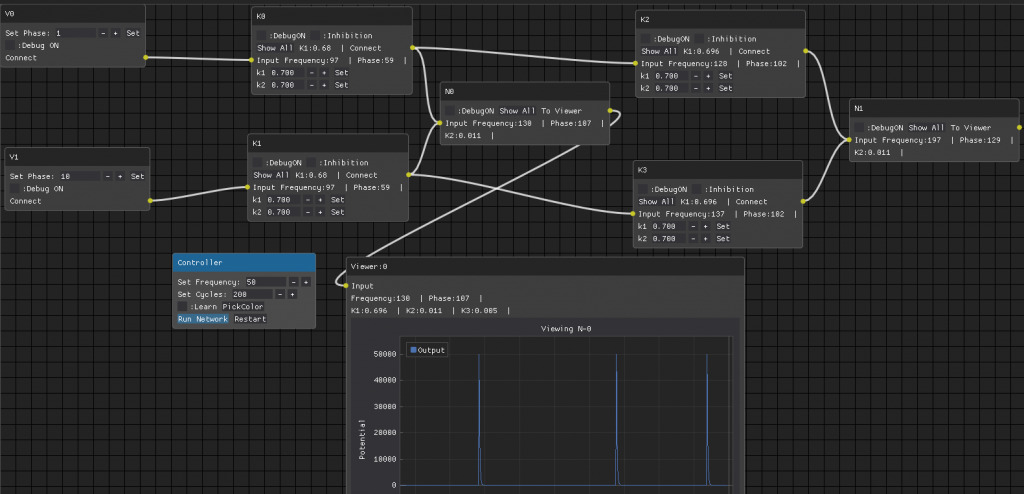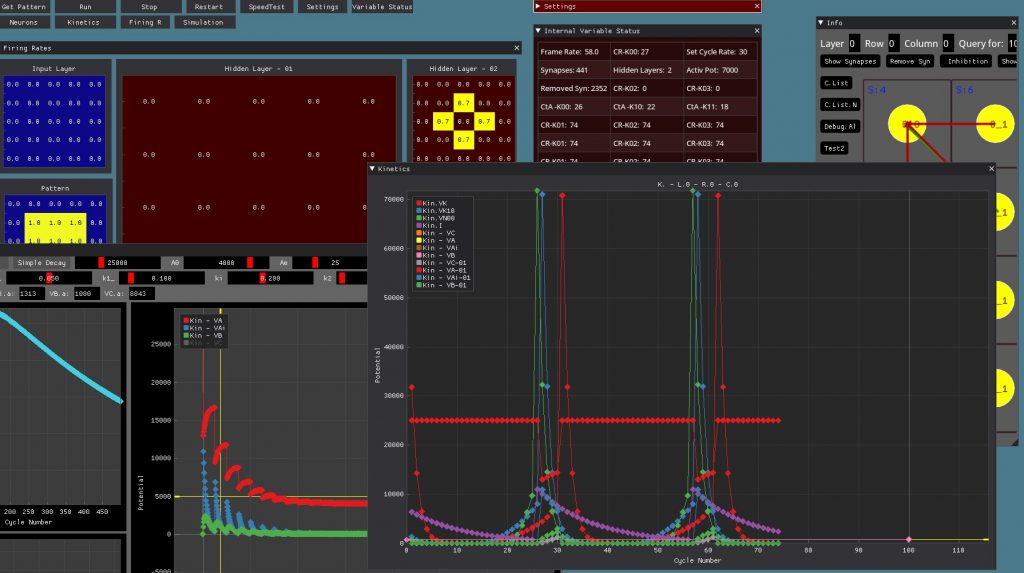I have based my learning mechanism on inhibition, it didn’t work. Inhibition favors complex patterns (multiple inputs) over smaller patterns, but we can learn both. Also Inhibition is a complex race, change frequency and the winner becomes hard to predict.
Next I tried using repetition as the bases for learning, frequent patterns will become favored over less frequent ones.. But this got me nowhere, within the limits of my system, everything eventually becomes well known pattern, because a learning variable cannot increase forever… so 2+ 2 is equally probable to be 2,3,4,5 and so on. So when everything is learned, nothing is..
This brings me to this topic… The input should provide the information, but how to encode / decode it. I have 3 parameters that I use to send information to the network:
Frequency, Phase and Sequence (sometimes I refer to sequence as timing ). So far I just made abstract assignments, I mostly kept Frequency constant and abandoned Sequence a while back. So I used only Phase like, 3 means this, 4 means this.. Nothing concrete. Meanwhile forgetting what 3 meant … This seems chaotic because only in retrospect I realized what I was doing… I just focused on “learning”… using simple patterns of a line of 2 pixels or 4 pixels, linear or cross.. But learning has to be better correlated with the input. So lately I’ve been working in actually converting a real image in an input, rather than creating abstract 0/1 patterns because I’m sure there are thing I’m missing and the network may not be receiving actually information through the input. But I still don’t know what I’m doing. I converted RGB data to LMS and randomly made input neurons as favoring RG or B frequencies. I liked the idea of LMS because I don’t want zero input values for any color, but I don’t like that for some colors the output of LMS is extremely small, that means the network will be blind to those colors, but it doesn’t matter that much for now, I will work only with colors that give adequate response, maybe even dropping the conversion to LMS since that has its own problems.. Having neurons that respond differently to colors creates chaos instantly but maybe this is what I need to move things forward …
“Learning” is still eluding me. Even without LTP/D or without inhibition there should still be a leaning mechanism, the network should learn something.. good/bad doesn’t matter. A set of variables should change because of a given pattern and remain so… In my case, many variable change, but they change back or getting altered by new patterns so much so that there is no more a correlation between initial pattern and some variables… I believe the problem comes from the fact that I don’t have a mechanism for Phase learning.. Phase is easily discriminated but I don’t see how I could make a neuron phase specific. So still in the dark but making progress by constantly discarding thing that don’t work 🙂


